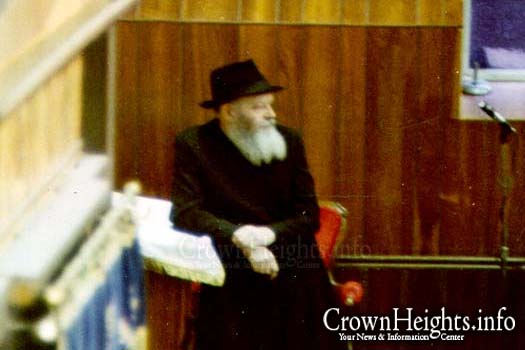
Answering a Number of Questions About Chabad
In a letter responding to questions about spiritual guidance and Chabad, the Rebbe responded and answered a number of questions.
By the Grace of G‑d
23rd of Adar, 5723 [March 19, 1963]
Brooklyn, N.Y.
Greeting and Blessing:
I received your letter some time ago, but this is the first opportunity to reply to it.
You write about your background and how you have found your way to the Lubavitcher Yeshivah in Lod. I am gratified to note that you have adjusted yourself so well. Your Chasidic ancestry certainly stands you in good stead, for spiritual qualities are hereditary, especially deep-rooted ones which the Chasidic teachings and way of life cultivate.
With regard to your question at the conclusion of your letter it is hardly necessary to seek guidance from across the sea when you are at the Lubavitcher Yeshiva and the Mashpi’im and Rosh Hayeshiva are able and willing to help the students. However, since you have asked them of me I will reply briefly:
1) Re: Pronunciation, whether Sephardic or Ashkenazic, you should daven in the way you are used to, and not complicate matters by a change.
2) Re: Zohar, your question is most surprising, for it is well known that the Zohar is an integral part of the Torah Shebe’al-peb. It is not a case of emphasis by the Alter Rebbe, for it was just as sacred also to the Gaon of Vilna, though in certain respects his shita differed from that of the Alter Rebbe.
3) You question the propriety of religious people who give expression to their joy and enthusiasm by dancing, etc., in front of the Aron Hakodesh, and you wonder if a Chilul Hasbem is involved. But of course, no Chilul is involved there, because:
a) This is the expression of true joy with the Torah and Mitzvos; on the contrary it would be a Chilul not to participate. Moreover, it is not something which is limited to Chasidim, but a basic principle of Halacha incumbent upon all Jews, based on the Torah and the famous narrative in Tanach. See also Rambam end of Hilchos Lulov where the subject is treated (more) at length.
b) Even when the observer does not feel the same degree of joy, but being in the company of Jews expressing their joy with the Torah, if he should not participate, it would be almost like a counter-demonstration, not only in relation to the cause of simcha. See Iggeres Hakodesh 24 by the Alter Rebbe, end of p. 274, and note it well there.
4) In reference to Tanya, where it is stated that the second soul of the Jew is truly a part of G‑dliness, and you ask why is the Jew singled out, since all humanity descended from Adam? The answer is that the distinction came with the Avos and especially the Giving of the Torah at Sinai, when the souls were assigned their particular place and standing, though all souls were included in the soul of Adam. In fact, our Sages declare that even among Jews, the various souls are related to particular aspects of the souls of Adam HaRishon.
5) You ask for an explanation of a statement in one of the general messages, a statement to the effect that we are living in the era of “Ikvisa DiMishicho.” This is based on many statements of my father-in-law. See also the signs of this era as indicated by Chazal (see end of Sota). It is not difficult to see these signs in our present generation.
I trust you are applying yourself with devotion and diligence to your learning of both Nigleh and Chasidus, with the view to practice Maalin b’Kodesh. This year is particularly auspicious, being the 150th anniversary of the Histalkus of the Alter Rebbe, especially for those who come from Chasidic ancestry. May your learning be the kind that prompts action: the fulfillment of the Mitzvos in daily life.
















Great!
Thanks for publishing!